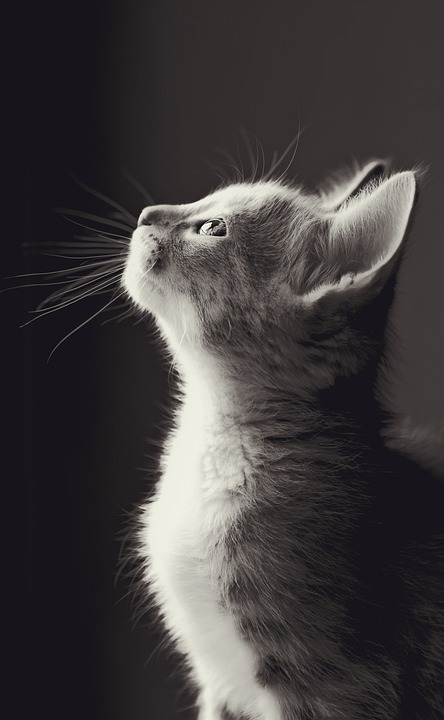As responsible cat owners, it’s crucial to ensure that our furry friends lead fulfilling lives, even if they have limited access to outdoor space. Mental stimulation is just as important for cats as physical exercise, and there are plenty of ways to engage your indoor feline companion. In this article, we will explore various strategies to provide mental stimulation for indoor cats, along with answers to frequently asked questions (FAQs) on this topic.
I. Understanding the Importance of Mental Stimulation for Indoor Cats
Cats, by nature, are curious and intelligent creatures. Mental stimulation is crucial for their overall well-being as it helps prevent boredom, anxiety, and related behavioral issues. When cats lack mental stimulation, they may exhibit destructive behavior, excessive grooming, or aggression. Providing mental stimulation for indoor cats is essential to keep them mentally sharp, happy, and content.
II. Interactive Toys and Puzzles
Interactive toys and puzzles are an excellent way to keep indoor cats mentally stimulated. These toys require cats to think, problem-solve, and use their natural hunting instincts. Puzzle feeders, treat balls, and interactive toys that dispense treats or catnip can keep your feline friend engaged and entertained for hours. Some recommended interactive toys include puzzle boxes, treat dispensers, and puzzle balls. It’s important to introduce these toys gradually and supervise your cat during playtime to ensure their safety.
III. Creating an Enriched Environmental Setup
Environmental enrichment plays a significant role in a cat’s mental health. Designing a cat-friendly indoor environment with scratching posts, perches, and hiding spots allows cats to engage in natural behaviors. Window views and bird feeders can also provide entertainment and sensory stimulation. Consider placing a bird feeder outside a window where your cat can watch birds or squirrels, stimulating their natural hunting instincts.
IV. Indoor Playtime and Exercise
Playtime and exercise are essential for indoor cats to burn off energy and maintain mental stimulation. Engage your cat in active play using toys like laser pointers, feather wands, and interactive toys that mimic prey. Schedule regular play sessions throughout the day, especially during the times your cat is most active. These play sessions not only provide mental stimulation but also strengthen the bond between you and your feline friend.
V. Incorporating Food Dispensing Toys and Treats
Food dispensing toys and treat puzzles are not only a great way to provide mental stimulation but also slow down your cat’s eating pace. These toys make cats work for their food, stimulating their problem-solving skills and preventing boredom. Recommended food dispensing toys include treat balls, puzzle feeders, and interactive food mazes. Introduce these toys gradually, and monitor your cat’s progress to ensure they are not becoming frustrated.
VI. Interactive Cat Videos and Television
Interactive cat videos and television programs specifically designed for cats can provide mental stimulation, especially when you’re not available for playtime. These videos feature birds, fish, or other animals that capture your cat’s attention and engage their hunting instincts. It’s important to select appropriate videos and introduce them gradually to avoid overwhelming your cat. Additionally, you can use television as a tool for relaxation by playing calming nature sounds or classical music.
VII. FAQs (Frequently Asked Questions)
1. Can I train my indoor cat to use a leash and take them outside for mental stimulation?
Training indoor cats to use a leash and harness can be possible but requires patience and gradual training. However, it’s important to note that not all cats will enjoy going outside, and it may not be safe in certain environments.
2. Are there any risks associated with providing too much mental stimulation for indoor cats?
While mental stimulation is important, it’s essential to strike a balance. Providing excessive mental stimulation without adequate rest can lead to overstimulation and stress in cats. Monitor your cat’s behavior and provide downtime as needed.
3. How long should I engage my cat in mental stimulation activities each day?
The amount of time for mental stimulation varies for each cat. Generally, 15-30 minutes of active playtime, along with access to interactive toys and environmental enrichment, should be sufficient. However, pay attention to your cat’s individual needs and adjust accordingly.
4. My indoor cat seems disinterested in the toys and puzzles I provide. What should I do?
Cats have different preferences, so it’s important to try different types of toys and puzzles to find what engages your cat. Rotate toys regularly to keep them interesting, and consider consulting with a veterinarian or cat behaviorist for additional suggestions.
5. Can I use catnip or other herbal products to enhance mental stimulation for my cat?
Catnip can be a great tool for mental stimulation as it stimulates the senses and provides entertainment. However, not all cats respond to catnip, so it’s important to observe your cat’s reaction. Other herbal products, such as silver vine or valerian root, may also provide mental stimulation and entertainment for some cats.
6. Are there any signs that indicate my indoor cat is not mentally stimulated enough?
Signs of inadequate mental stimulation in cats may include excessive grooming, destructive behavior, increased vocalization, or lethargy. If you notice any of these signs, it’s important to reassess your cat’s environment and provide additional mental stimulation.
Remember, every cat is unique, so it’s important to observe your feline companion’s preferences and adapt the strategies accordingly. By providing ample mental stimulation, you can ensure your indoor cat leads a happy and contented life, even without regular access to the outdoors.








